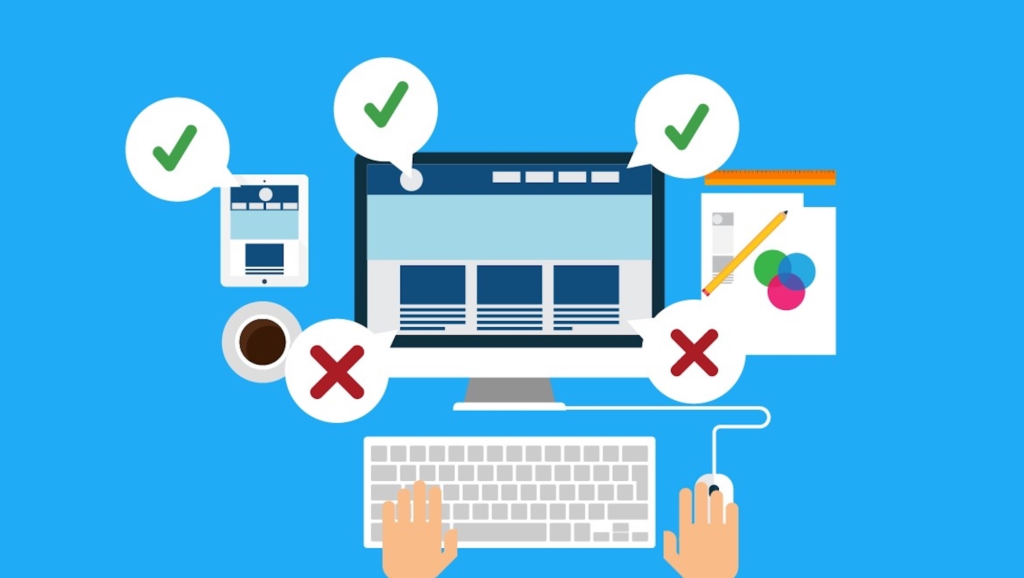In today’s digital age, having a solid online presence is crucial for any business. A website acts as the virtual front door to your organization, and often, it’s the first impression potential customers will have of your brand. However, amidst the rush to establish this online presence, many businesses make critical web design mistakes that can deter visitors and harm their brand image. Here are ten common web design blunders and how you can avoid them.
1. Ambiguous Navigation
Imagine entering a store, eager to make a purchase, but you’re unable to find what you’re looking for because the aisles are messy and products are scattered everywhere. That’s how visitors feel when your website lacks a clear and intuitive navigation structure.
When users can’t find the information they need easily, they’re likely to abandon your site and head to a competitor. To ensure seamless user experiences, ensure that your navigation menus are clear, concise, and organized logically. Dropdowns should be used sparingly and purposefully, while key pages like ‘About Us,’ ‘Services,’ and ‘Contact’ should be easily accessible. It is always wise to consult a web design expert.
2. Overwhelming Use of Pop-ups

Source: abmcollege.com
We’ve all encountered those websites that bombard us with pop-ups the moment we land on their homepage. While pop-ups can be effective for capturing leads or announcing promotions, excessive or intrusive use can irritate visitors and prompt them to leave.
If you decide to use pop-ups, do so with moderation. Make sure they’re relevant to the user’s experience, easy to close, and not overly frequent. Remember, less is often more when it comes to interruptive design elements.
3. Neglecting Mobile Users
With more than half of global web traffic originating from mobile devices, it’s astonishing how many businesses still neglect the mobile experience. Websites that aren’t optimized for mobile devices lead to frustrated users pinching and zooming to access content.
To ensure that all users can interact with your website, regardless of device, adopt a responsive web design approach. This ensures that your site adjusts according to the device’s screen size, providing an optimal viewing experience for everyone.
4. Overloading with Heavy Media
While high-quality images and videos can enhance your website’s look and feel, they can also slow it down if not optimized correctly. A sluggish website is a major turn-off for many users, with a significant number abandoning sites that don’t load within a few seconds.
To avoid this, always compress and optimize your images before uploading them. For videos, consider using external hosting platforms like YouTube or Vimeo, which can handle large media files without compromising your site’s speed.
5. Ignoring the Importance of Readability
In the quest for a unique and stylish website, some designers go overboard with fonts, colors, and backgrounds that sacrifice readability. If your visitors struggle to read your content due to poor contrast or overly decorative fonts, they’re unlikely to stick around for long.
Stick to web-friendly fonts, maintain a high contrast between text and background, and ensure that your text is broken into manageable chunks. Short paragraphs, meaningful subheadings, and ample whitespace can significantly improve readability.
6. Lack of Clear Calls to Action

Source: matchboxdesigngroup.com
Your website shouldn’t just be a digital brochure; it should guide visitors toward a specific action, whether that’s making a purchase, signing up for a newsletter, or contacting your team. However, many businesses fail to incorporate clear and compelling calls to action (CTAs).
CTAs should be strategically placed throughout your site, ensuring that wherever a visitor is, they’re prompted to take the next step. Use persuasive language, and contrast colors to make your CTAs stand out.
7. Generic Stock Photos
Using generic and irrelevant stock photos can make your business come across as insincere or disconnected. While stock photos can be useful, it’s essential to choose those that resonate with your brand and your target audience.
If possible, invest in original photography that genuinely represents your business. This not only boosts authenticity but also helps in setting your brand apart from competitors.
8. Disregarding SEO Best Practices
A beautiful website is of little use if no one can find it. Ignoring SEO (Search Engine Optimization) best practices is a blunder that can significantly hamper your website’s visibility on search engines.
From ensuring your site has a logical structure to optimizing meta tags and ensuring fast loading times, adhering to SEO best practices will improve your site’s search rankings, thereby attracting more organic traffic.
9. Skimping on Testing
Launching a website without thorough testing is akin to setting sail in a leaky boat. Many businesses, in their haste to go live, overlook this crucial step and end up with a site riddled with broken links, loading issues, or compatibility problems.
Before your website goes live, conduct a thorough test on different devices and browsers. This will help you catch and rectify any potential issues, ensuring a smooth experience for all visitors.
10. Not Gathering Feedback

Source: cubicleninjas.com
Lastly, many businesses assume that once their website is live, their job is done. However, the web is ever-evolving, and user preferences change over time. Regularly gathering feedback from your users can provide valuable insights into areas of improvement.
Whether through surveys, feedback forms, or direct conversations, understanding your audience’s pain points and preferences can guide your future design decisions, ensuring your website remains relevant and user-friendly.
Final Words
A well-designed website is more than just a digital calling card. It’s a powerful tool that can drive business growth, foster customer relationships, and establish brand authority. By being aware of these common blunders and taking steps to avoid them, businesses can create a website that not only looks good but also performs efficiently, creating lasting impressions on visitors. Whether you’re designing a new site or revamping an existing one, always prioritize the user’s experience and continuously adapt based on feedback and evolving best practices.



